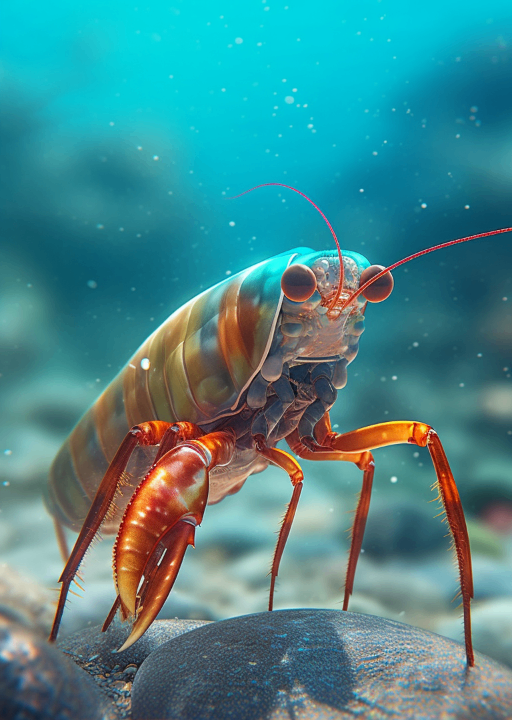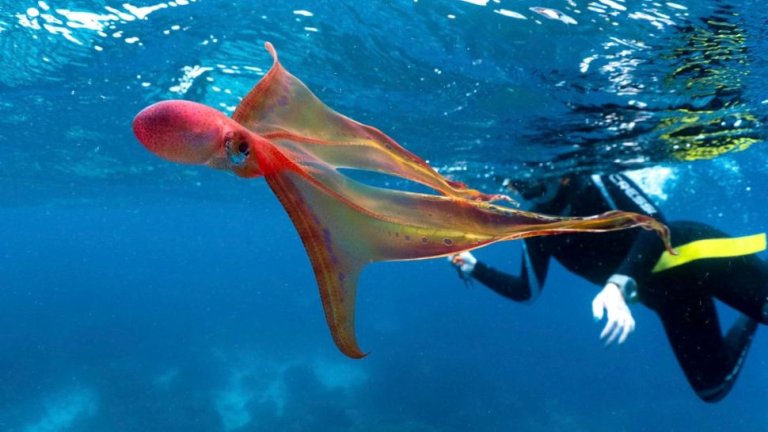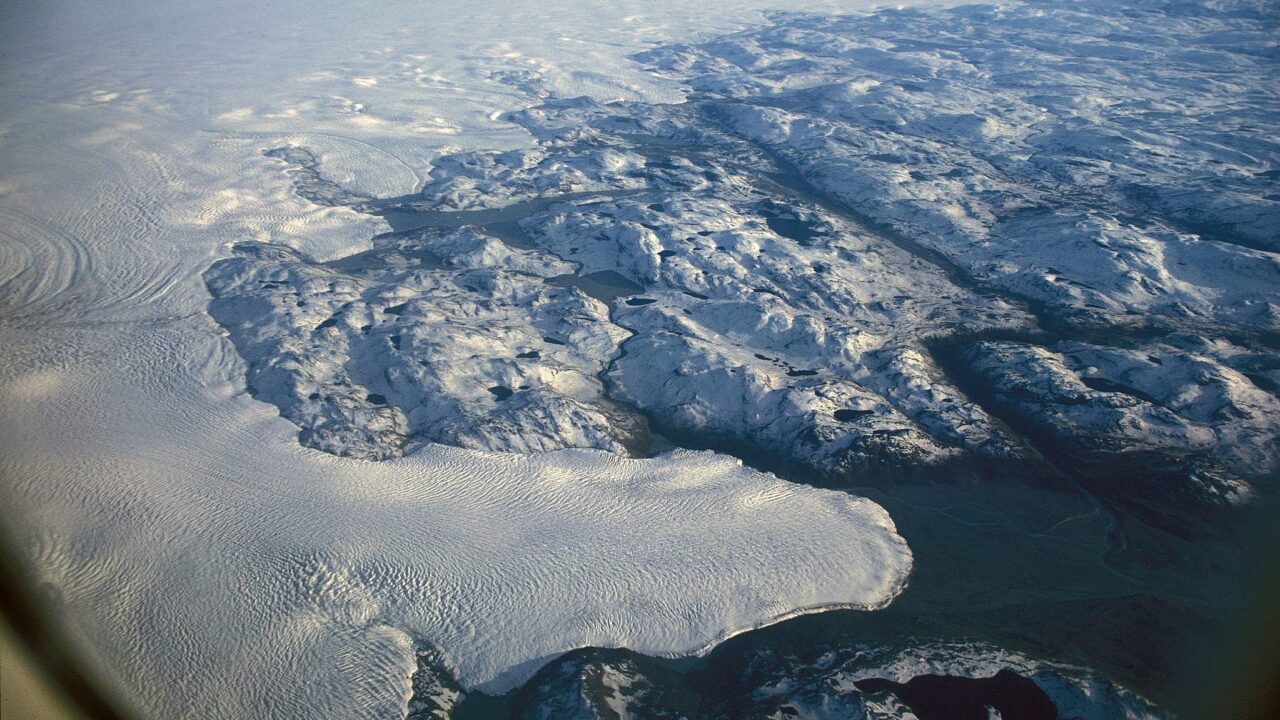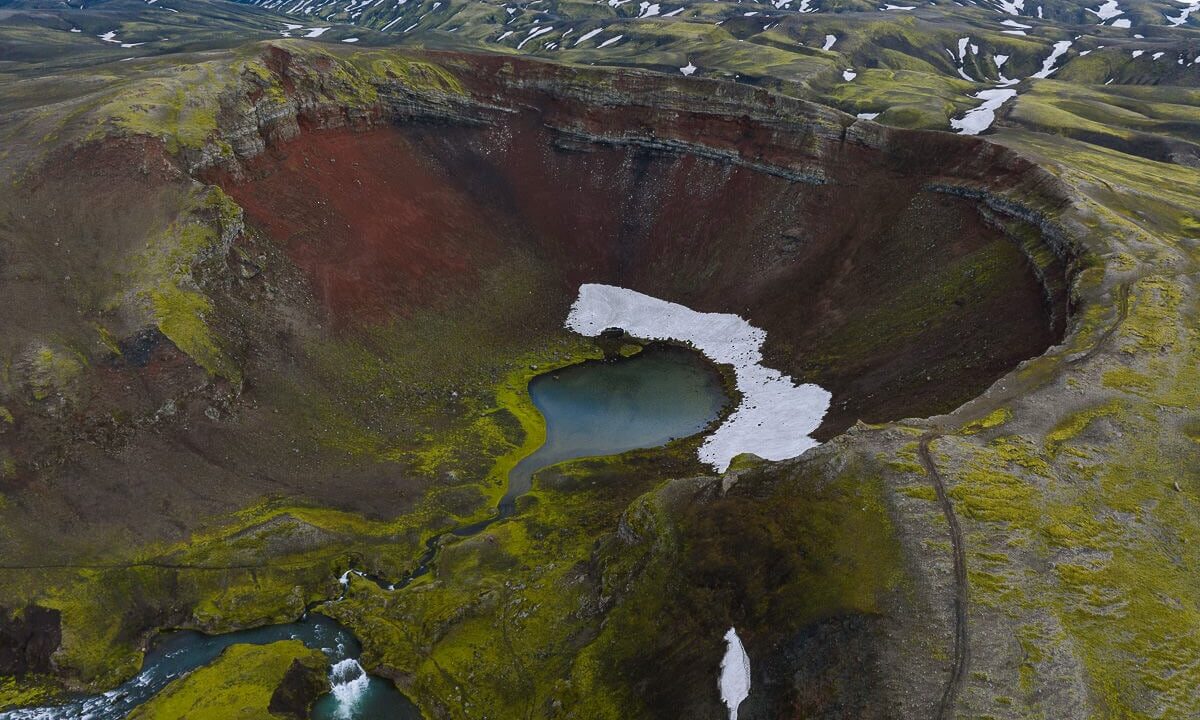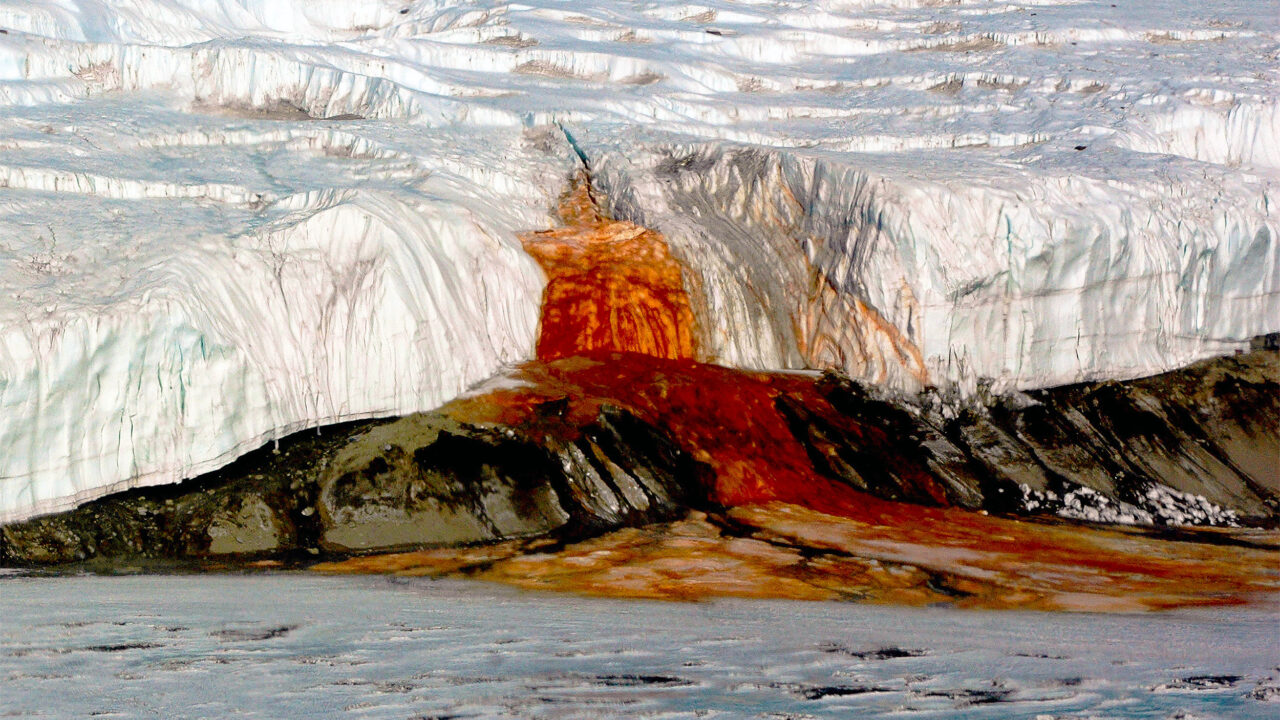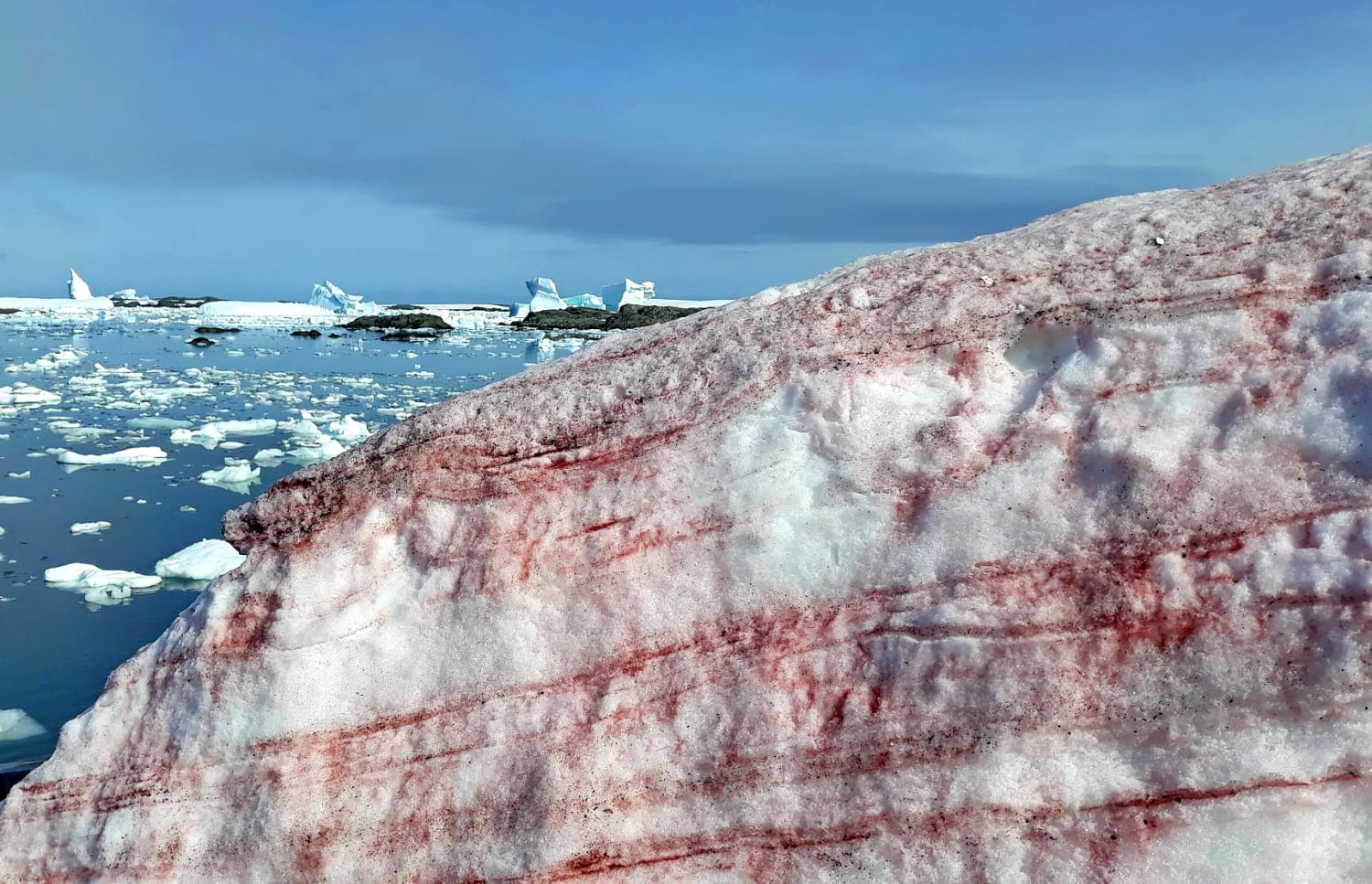The red snow phenomenon in Antarctica is caused by snow algae that turn the ice pink or red. Discover the scientific explanation, its causes, and its environmental impact here.
What Is Red Snow?
Red snow, also known as “watermelon snow,” is a rare natural phenomenon where snow turns pink or red. Although it may look like blood, the color is actually caused by microorganisms that thrive in the extreme conditions of Antarctica.
ALSO SEE : The Disappearing Rivers of Slovenia’s Karst Landscape: A Natural Wonder
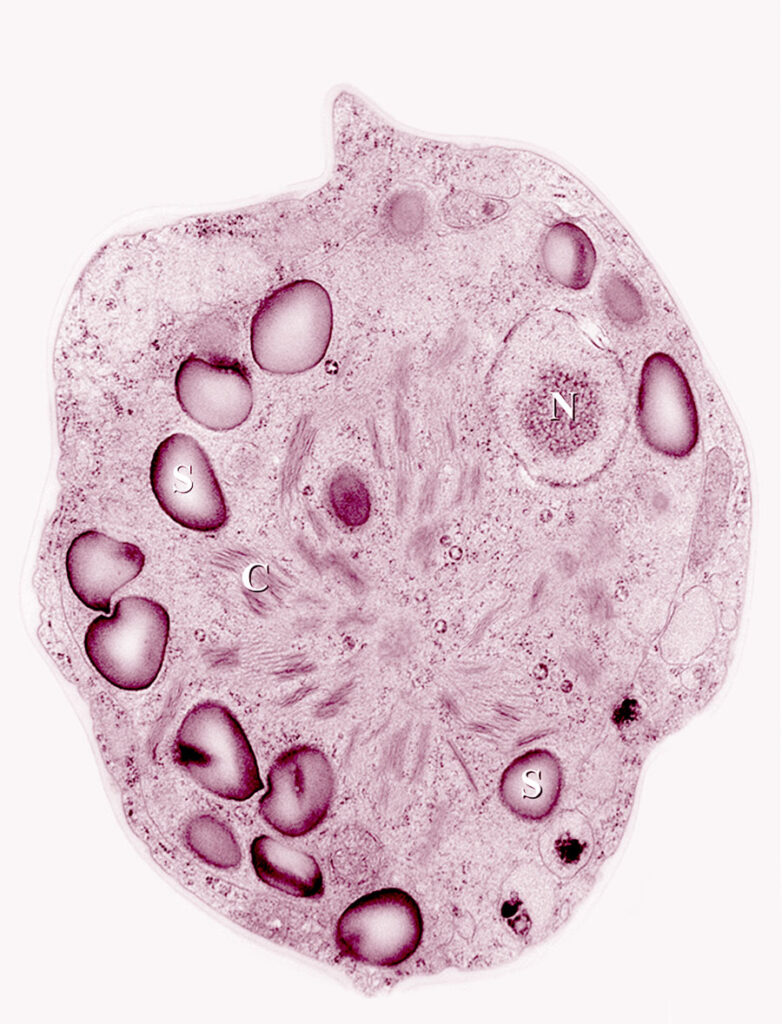
What Causes the Red Snow Phenomenon?
The primary cause of red snow is snow algae (Chlamydomonas nivalis), a type of microorganism that contains a red pigment called astaxanthin. This pigment protects the algae from harmful ultraviolet (UV) radiation and helps it absorb heat.
As temperatures rise during the Antarctic summer, the algae become active and multiply rapidly, forming visible red patches on the snow and ice surface.
Where Does This Happen?
This phenomenon is most commonly seen in parts of the Antarctic Peninsula, especially near the Vernadsky Research Base. However, similar occurrences have also been recorded in:
- The Alps
- Greenland
- The Rocky Mountains, North America
Environmental Impact
This phenomenon is more than just a visual curiosity. Red snow can accelerate the melting of ice because the darker pigmentation absorbs more heat from the sun than white snow, which typically reflects sunlight.
This effect is known as albedo reduction, which creates a feedback loop:
More algae → darker snow → faster melting → more favorable conditions for algae.
This has raised concerns among scientists as it could contribute to faster climate change in polar regions.
Is It Safe and What Are the Signs?
While it may be visually fascinating, red snow is not safe to consume. Although the color is not toxic by itself, the presence of microorganisms and other possible contaminants makes it unsafe.
Common characteristics of red snow:
- Pink to deep red coloration
- Sometimes has a faint watermelon-like smell
- Usually appears during warmer periods (polar summer)
What Do Scientists Say?
Recent studies in 2025 revealed that snow algae in Antarctica could contribute to the melting of up to 2 million tons of snow per summer. Researchers also connect this phenomenon with rising global temperatures and shifting climate patterns in polar regions.
DAILY INFORMATION : The Village Forever Wrapped in Fog in China
The red snow phenomenon in Antarctica highlights the complex relationship between microorganisms, temperature, and climate. While it may appear beautiful and unique, it is a clear indicator of global climate change that deserves serious attention.
